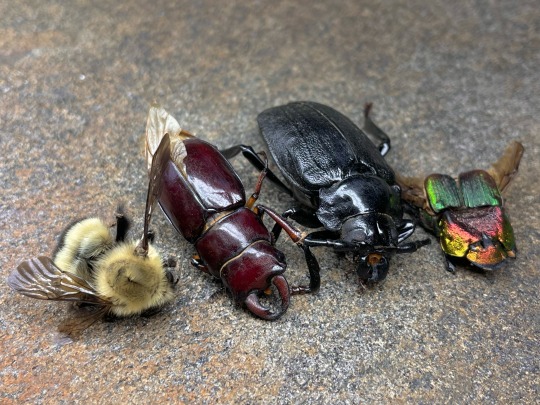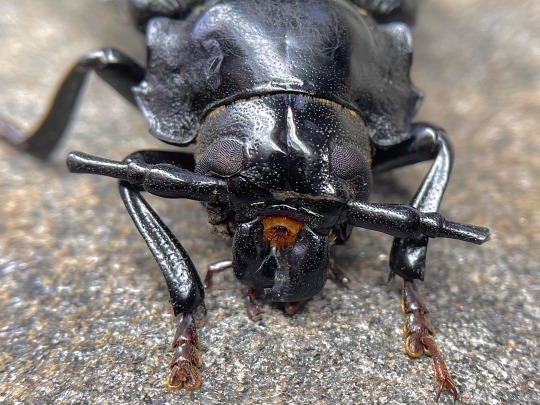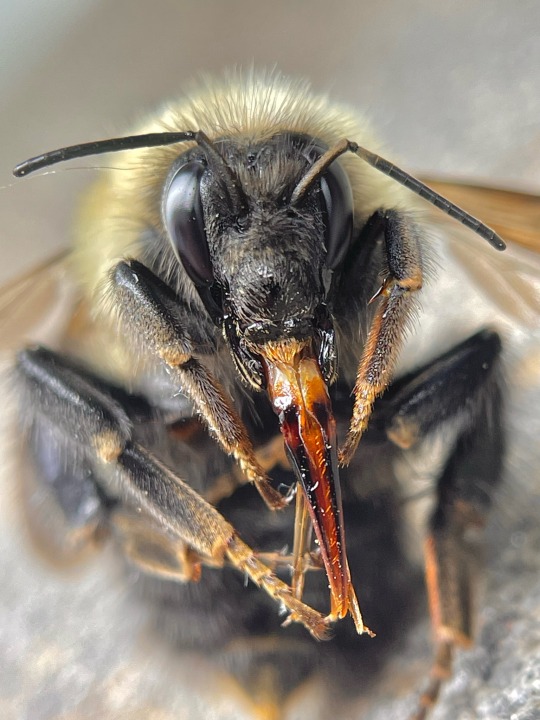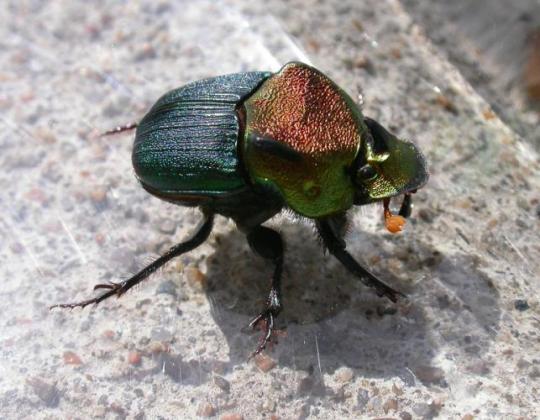#phanaeus
Explore tagged Tumblr posts
Text

Green Demon Rainbow Scarab (Phanaeus demon), family Scarabeaidae, Guerrero, Mexico
photograph by Eugenijus Kavaliauskas
4K notes
·
View notes
Note
are your kofi bug doodles also closed for this month alongside your shop? I was gonna rq one if not, so im just curious :o
ko-fi bug doodles are ALWAYS open

#bug doodles#phanaeus demon#it may take me a little longer than usual to get to them than before is all
114 notes
·
View notes
Text
Day 41: Phanaeus adonis

There are some lovely colorful dung beetles, I should draw more of those!
11 notes
·
View notes
Note
gwampy! she climbs up onto his head and places a tiny crown on it likey? i sunk ship fow it!
-Marielle @the-star-of-the-seas
Kronos stared at the young child as he automatically helped her up and stabilized treasure as pearl climbed onto his head. "Okay," he said with a lack of anything else to say. "Uh, was there at least nobody on the ship when you sank it?"
#rp: kronos oulomos#for the record i do *not* eat my children#kronos rp#oc: marielle phanaeus#[Phanaeus - “giving or bringing light”; epithet of Apollo :))]
0 notes
Text
I want to share my top 3 bugs




#bugs#tw bugs#luna moth#phanaeus demon#beetle#literally any kind of dragonfly#big fan#big interest#feel free to reblog with your own favorite bugs
0 notes
Text

The Sun
The Sun Card radiates with the brilliance of optimism and enlightenment. It is a symbol of pure, unadulterated joy, casting its golden rays upon a world of boundless possibilities. In its essence, the Sun Tarot Card teaches us the lessons of illumination and clarity, dispelling the shadows of doubt and uncertainty.
Much like the Sun, the rainbow dung beetle stands as a testament to the enduring power of light and positivity in the face of life's trials. This remarkable beetle, adorned with an iridescent sheen, emerges from the hidden depths of dung piles. They tirelessly convert waste into new life, representing the relentless pursuit of purpose and transformation even in less than ideal circumstances. They symbolize the importance of finding value and purpose in what others may deem repugnant or insignificant. Just as the Sun shines its light on all without discrimination, dung beetles play a crucial role in recycling and renewing ecosystems.
Furthermore, the Sun Tarot Card encourages us to embrace our authentic selves, basking in the warmth of self-expression. Dung beetles, too, exhibit authenticity in their unwavering commitment to their role in nature, reminding us that our actions, however modest, can have far-reaching effects. It prompts us to recognize that we are all part of a greater whole, and our well-being is intertwined with the health of our environment.
In essence, the Sun Tarot Card and dung beetles both remind us that even in life's darkest corners or beneath layers of adversity, there exists the potential for growth, joy, and radiant transformation. By embracing our authentic selves and finding purpose in all that we do, we, like the dung beetle, can shine brightly. They urge us to embrace the simple pleasures of life, to bask in the warmth of happiness, and to share our radiance with others. Just as the Sun nourishes life on Earth, our positivity and enthusiasm can nurture the world around us.
Prints available on Redbubble and Inprnt
| Instagram |
#artists on tumblr#illustration#insects#tara jillian art#bugs#nature#redbubbleartist#bug tarot#tarot cards#tarot art#the sun#scarab beetle#dung beetle#rainbow scarab#entomology#phanaeus vindex#big bug gospel#bugblr
1 note
·
View note
Text

Have you ever seen the magnificent rainbow scarab (Phanaeus vindex)? This colorful dung beetle can be found in parts of the eastern and central United States. While most dung beetles are dull shades of brown or gray, this species is one of a handful adorned in striking iridescent colors. Males also sport large horns on their heads! Like other dung beetles, this insect rolls dung into balls to incubate its young. It also digs dung-filled tunnels nearby to ensure that the newborn beetles will have enough to eat.
Photo: Thomas Shahan, CC BY-NC 4.0, iNaturalist
#science#nature#natural history#animals#insects#entomology#did you know#fact of the day#beetles#scarab#rainbow#iridescent#bugs#cool animals
2K notes
·
View notes
Text
Looks like a female Phanaeus vindex or Rainbow scarab, a species of north American dung beetle. 🌈🪲



#entomology#Phanaeus vindex#rainbow scarab#dung beetle#beetle#beetles#coleptera#scarabidae#rainbow dung beetle
114 notes
·
View notes
Text

a lucky five minutes of walking turned up four beautiful deceased insects!




these four are a two-spotted bumblebee (Bombus bimaculatus) queen (?), a reddish-brown stag beetle (Lucanus capreolus), a broad-necked root borer (Prionus laticollis) and a rainbow dung beetle (Phanaeus vindex), the first I’ve ever seen
the Prionus is missing several parts and the Phanaeus was stepped on, but the other two are pristine. I’ll try to clean up and pin all of them! much more so than killing and pinning live insects, I enjoy fixing up a dusty old dead bug found on the street or in a windowsill. it’s sort of like antique restoration…
963 notes
·
View notes
Text

Rainbow Scarab (Phanaeus vindex)
Habitat & Distribution
Can occupy a range of habitats; most commonly found in pastures and grasslands
Found throughout the continental United States east of the Rocky Mountain Range, down to northern Mexico
Physical Description
Length: 11-22 millimeters (0.4-0.9 inches)
The body is round and stocky, and males have a large horn on their heads
Both males and females have iridescent, primarily green metallic shells, though the shells of females are more dull than males
Adults have wings that are hidden beneath the hard shell when not in use
Behaviour
Rainbow scarabs feed almost exclusively on dung, particularly that of large herbivorous mammals
Adults build extensive subterranean tunnels below food sources, and bury excrement for their larvae to feed on
Unlike other dung beetles, the rainbow scarab shapes faecal matter into pear-shaped balls
Rainbow scarabs are mostly solitary, and males will battle each other to defend their territories
Main predators are birds of prey, including the burrowing owl
Key Advantages
Though they mostly stay on the ground, rainbow scarabs are able to fly over short distances
The irridescent shell may confuse predators
Photo by Julianna Schroeder
84 notes
·
View notes
Note
Found this guy. He looks and acts like a June Bug, but is shiny and diurnal‽ What is he‽ Parker County, North Texas

Beetle ID - No TX, USA:
Henlo, yuss, this is one of my favorite beetles!
Rainbow Scarab (Phanaeus vindex), family Scarabaeidae.
Rainbow Scarab (Phanaeus vindex) · iNaturalist
Species Phanaeus vindex - Rainbow Scarab - BugGuide.Net
#scarab#scarabaeidae#dung beetle#phanaeus#coleoptera#insect#entomology#animals#nature#north america#ID
98 notes
·
View notes
Text

[29, 30, 31] Happy Halloween!
Not a song, but just some dorks cosplaying. Harlen is Jujutsu Kaisen's Nanami Kento, Laertes/ Phanaeus is @phantomarine's Cheth.
That's all for this Drawtober!
#doodlin#drawtober#harlen lewis#laertes#one of these dorks is doing much better than the other... it's not the shapeshifter
16 notes
·
View notes
Text
Day 5: Mexican horned dung beetle

Wax pencil on elephant poo paper again. I'm having fun and there are many cool dung beetles so I think I'm going to keep going <3
18 notes
·
View notes
Note
RAINBOW COLORFUL BUG
AHAHAHAHHAHAHAHAHBSBWJAHHA
i’ll give you one for a few orders :)
Coleoptera (beetles): The Rainbow Scarab (Phanaeus vindex) is a North American dung beetle that likes to hybridize with Phanaeus difformis (also colorful, but in a different way). We would live a much grosser world without dung beetles, as the Australians learned when cows were brought to the continent. Without dung beetles, dung gets recycled into the soil far slower.
Lepidoptera (butterflies and moths): Madagascan Sunset Moth (Chrysiridia rhipheus) is from Madagascar (mind blowing). Due to its shape and impressive colors it is much sought after by collectors. The black parts of the wings are actually the only pigmented parts, while the rest is reflected light.
Hemiptera:



take a close look at these guys! (genus Agrosoma) they’re beautiful. they live in central america and the last picture is a nymph (baby bug that doesn’t do metamorphosis)
Orthoptera (crickets, katydids and grasshoppers): rainbow grasshopper (Dactylotum bicolor) is native to the western great plains of north america. sry i don’t really uhhhhh have facts for grasshoppers they’re not as interesting to me as bees and stuff
Hymenoptera (bees wasps and ants): The ruby-tailed wasp (Chrysis ignita) is a cuckoo wasp that lays its eggs inside the nests of a few species of potter wasps. They don’t have a stinger and are found in europe and asia.
#beetles#entomology#bugs#insects#insect#bug facts#beetle#wasps#wasp#leafhopper#hemiptera#moth#moths#grasshopper#grasshoppers
7 notes
·
View notes
Text



Praise be to Apollon Chrysaor, golden god Son of enduring Leto and just Zeus
Praise be to Apollon Phanaeus, bringer of light Apollon of the silver bow, may your piercing aim guide me unto a path righteous and true
Shining, bright, helping Apollon Dear to my heart bless us with the strength to do what is right, and act despite the anxiety that plagues us
Khaire Apollon, Hail the great Delian King

5 notes
·
View notes
Text

Green Demon Rainbow Scarab (Phanaeus demon), family Scarabeaidae, Guerrero, Mexico
6 notes
·
View notes